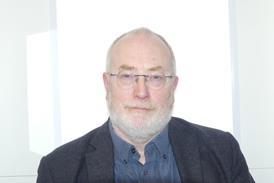Population health management is a true test of system working, requiring health and local authorities to come together in a different way. However, it also means shifting resource, says Andy Haynes
Population health management is one of the key catalysts for the system integration that we are trying to achieve in the Nottingham and Nottinghamshire Integrated Care System.
That’s because at its heart is the recognition that health outcomes are affected by a much broader swathe of socio-economic determinants than just direct health interventions.
Sponsored by
So, if we plan our resourcing to deliver purely health interventions, it’s likely we will struggle to reduce health inequalities and if the data we use in our planning is all aggregated, we may miss pockets of the more deprived population who have poorer health and care outcomes.
A PHM approach to planning health and care, using data broken down to a local level, will help us to focus on reducing inequalities and to work together across health and care to improve wellbeing for everyone.
We’re aiming to deliver PHM through our 20 primary care networks and the three integrated care partnerships covering Nottingham City, South Notts and Mid Notts, which see health providers, commissioners and local authorities coming together to improve services.
Data is a key strength
One of our ICS’ key strengths is the data in our ‘GP Repository for Clinical Care’, which pulls together primary, community, secondary and social care data and which all our GPs are signed up to.
It’s a hugely effective integrated database and we’ve already used it to help primary care target their prevention work. The database is updated every night, so we can see the impact of any new interventions much more immediately, rather than relying on retrospective data that is months out of date.
We’re also able to break down data at a place, neighbourhood or even individual practice level and we can use it to look for the impact of wider determinants such as housing, homelessness and employment.
Those people who are healthy now but have health problems on the horizon aren’t yet on anyone’s agenda, but we want to start preventing people breaking rather than fixing them when they are broken
Through a PHM approach, we can also use this data to focus on our healthier population and look for the early indicators of what their life is going to look like in 15 years’ time.
If we can keep someone in the healthy population for a year longer than they might otherwise be, that will translate into an improvement in their healthy life expectancy after they reach 65.
Those people who are healthy now but have health problems on the horizon aren’t yet on anyone’s agenda, but we want to start preventing people breaking rather than fixing them when they are broken.
Focus on diabetes
We’ve focussed our PHM work so far on diabetes, and we have already produced an enormous pack of incredibly rich, up-to-date data including both health metrics and wider determinants, cut by ICS, ICP and PCN area.
We’re sharing it with our ICPs and PCNs, and the onus is now on them to work together and to use this information to deliver more informed commissioning and planning decisions.
We’ve also segmented the population into healthy, pre-diabetes, diabetes and high needs and identified a shortlist of potential interventions that the partners can consider, adapting the model so that it’s right for their local population.
We’ve focussed our PHM work so far on diabetes, and we have already produced an enormous pack of incredibly rich, up-to-date data including both health metrics and wider determinants, cut by ICS, ICP and PCN area
The interventions aren’t all for ‘health’ to deliver – they include support groups, coping skills, physical activity and reducing homelessness, and population-wide initiatives to empower people and encourage healthy behaviours, all of which are best delivered through an integrated system.
PHM is a true test of system working, as it requires health and local authorities to come together in a different way. We need to have the courage to start planning based on what the data tells us and that will mean shifting resource – which is where conversations get a bit more difficult.
We are proud of what we have achieved so far, but we have a long way to go.
Find out more at www.healthandcarenotts.co.uk





























